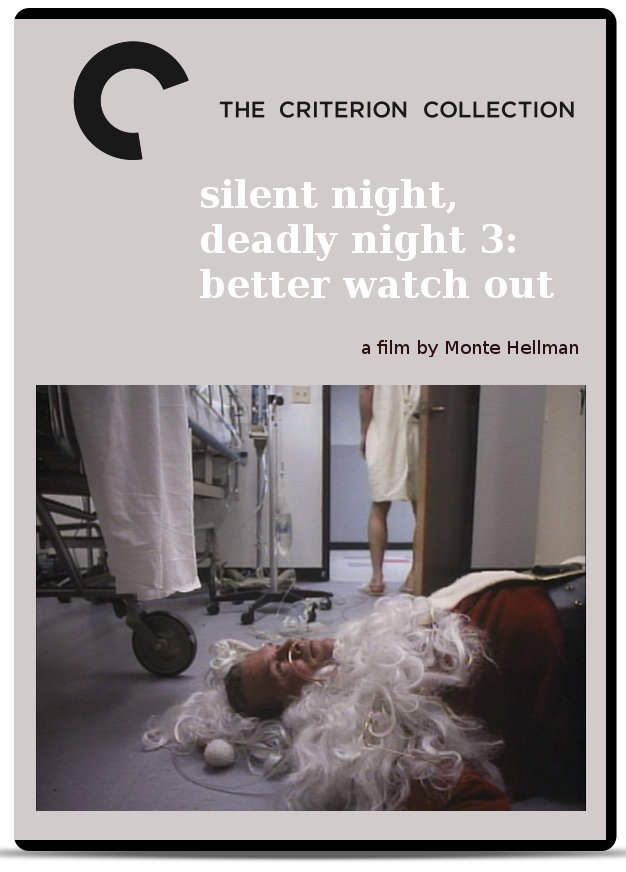I made this DVD cover as a thought experiment (previous example). Whereas Hellman's film Cockfighter will never get the Criterion treatment for an absolute certainty, because of animal rights activists and general distaste for southern cracker entertainment, this 1989 entry in the yuletide nightmare franchise might actually... nah.

It's a pretty good effort, rather droll and arch as it delivers the goods to the teenage date market. The protagonist is a cute blind girl with psychic powers; the bad guy is the serial killer from previous films (I think) who was revived from the dead by a well-meaning (!) scientist, played by Richard Beymer (later Benjamin Horne in Twin Peaks). More future Lynch actors show up: wifebeater Leo from Peaks and Laura Harring, twelve years before her breakout role in Mulholland Drive.
The serial killer wears a transparent plastic dome on his head that, as the movie progresses, shows clearer and clearer views of his exposed brain matter underneath the plastic. By the end, we even see reddish fluid sloshing around in there. Ick.
The film is never boring but moves slowly. Shots are carefully framed, especially closeups of the heroine, who looks like a Seventeen cover model and is smart, resourceful (at least when she's not walking up to the killer and touching his face), and surprisingly acid-tongued. An early scene with a shrink establishes that she's full of anger over the loss of her parents and that's why she keeps insulting everyone with rude one-liners throughout the movie.
Unless you are an IMDb commenter ("I feel that this is the absolute worst" etc), you can tell this movie was made by a slumming auteur. It's too smart, and the camera work and editing too assured, for the cheesy '80s series that launched with a topless Linnea Quigley running from an ax. In turns dreamlike and sarcastic, SNDN3:BWO is Two Lane Blacktop with decapitations.








